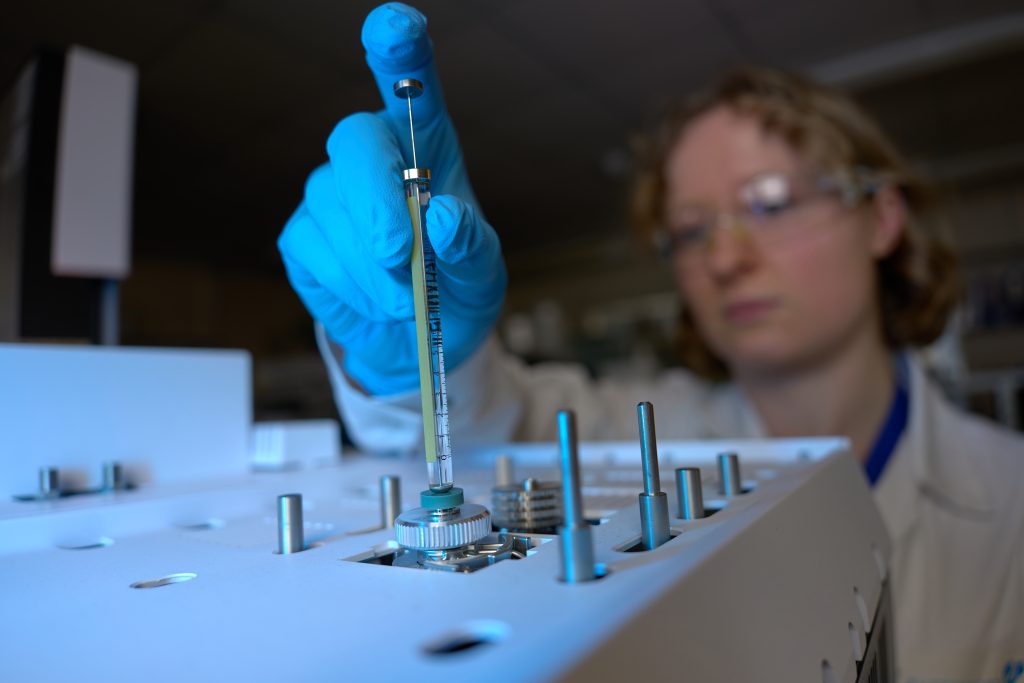For over 40 years, Butterworth Laboratories has provided independent, contract analytical services to the global pharmaceutical and related industries.
Hypromellose and other cellulose-type assays
30 April 2024
For decades, Butterworth has been using hydriodic acid in the form of the Zeisel reaction to strip the
methoxy, ethoxy and hydroxypropoxy groups off various cellulose backbones. The assay of
hypromellose, methyl-, ethyl- and hydroxypropyl cellulose type samples to the Ph.Eur., USP, JP and
ChP involves a complex and hazardous reaction via the adipic acid catalysed cleavage of the alkoxy
group from the cellulose backbone with hydriodic acid and subsequent formation of the alkyl iodide
which itself is used as the targeted analyte. The reaction is carried out with the hydriodic acid at
elevated temperatures. This analysis certainly puts the reaction vial, cap and septa to the test.
Over the years, BLL has trained many analysts in the assay and has witnessed a number of changes
in the form and scope of the test. From the wet chemistry test to the packed column GC test with
FID or TCD to its current incarnation as a capillary column GC assay with FID or TCD. However, within
the JP, there still exists one monograph that embraces the old packed column technology,
Hypromellose acetate succinate.
You would be forgiven for thinking that the move to capillary GC is a sign of the times and an
improvement in the test. On the contrary. This must be the only test where we GC analysts at BLL
yearn for the classic packed column approach, if only for the methoxy part, which occasionally
produces slightly inferior precision using capillary columns. We put this down to split discrimination.
In spite of the hazards associated with the test, it has always been and still is a favourite test for our
GC analysts to perform as it involves “proper” chemistry rather than a simple weigh and dilute. To
add to the hands-on nature our analysts get to show off their manual injection technique, which,
believe it or not, is far superior in precision and replication than any GC autosampler. The internal
standard certainly helps, of course.
Due to the precision, we obtain for each of the analytes (<1.0% manual injections), we have opted to
tighten the pharmacopoeia’s system suitability requirement of 2.0% RSD (n=6) for the hypromellose
monograph. The reason being is that the specification for substitution type 2910 is 28.0 – 30.0% for
methoxy groups. Such a large precision requirement for such a tight specification can inevitably
result in out-of-specification results for those samples manufactured at the lower end of the
specification. Indeed, this has occurred on several occasions and in conjunction with one of our clients we proposed and agreed to tighten the RSD requirement to 1.0% for all hypromellose testing, irrespective of the substitution type. This gives us, and of course, our clients, greater
Our expertise in this test over the years has resulted in many of our clients